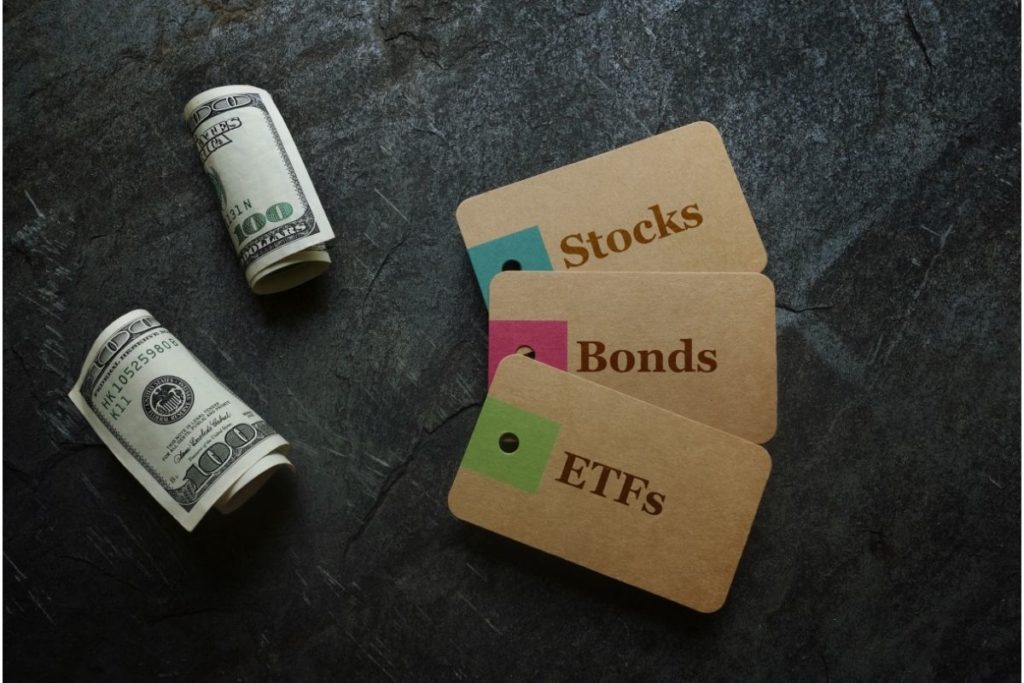Investing in gold is getting easier by the day. The gold market is becoming liquid, and investors have various options which they can use to gain exposure to this metal. However, deciding between either purchasing gold through ETFs or physically can be a hard one to make. Following the public’s rising trust in banking systems, many investors find themselves wondering how EFTs stack up to owning physical gold. If you look at these two ways of gold investment, you’ll realize that they have a significant difference. The form of gold you purchase can make a difference.
What Is Gold ETFs
Gold exchange-traded funds are investment funds that invest in physical gold and track local prices of gold. They are backed with 99.5% pure gold. Gold ETFs represent physical gold; a measure of one unit of ETFs is equivalent to one gram of physical gold. ETFs, allow investors to invest in gold without markups, storage, and security costs. An investor may lose part of their investment value taking care of these unavoidable costs, especially since these are recurring costs that need to be taken care of annually.
Investors also have to pay a buying and selling commission, which usually falls under $10; however, it can add up if you are an active trader. Also, if a broker assists your trade, they may require from you an average amount of $25. To address investors’ concerns about these prices, some brokers are now offering free online trading for specific EFTs. Noteworthy, it is best to know that you will not be dealing with physical gold at any point of your trade even though your ETFs investment is physically backed. You will only be redeeming or selling shares in exchange for gold. Some of the benefits that you will enjoy with ETFs trading include;
- Open and simple trading
- Easy transactions
- Inexpensive since there are no additional charges except for brokerage and fund management fees
- Protection against inflation
- ETFs can be used as a loan collateral
- Diversifies your portfolio and aids in risk reduction during unpredictable markets.
Physical Gold Investment
Investors get direct gold exposure through physical gold. Bullion can be represented in bars and coins. The value of gold lies in its purity and mass and not its monetary face value. Even though gold is issued through its monetary face value, its market value still lies on its contents. Physical gold can be bought from the government and private mints, precious metal sellers, and jewelers.
Physical gold is purchased directly without any intermediaries or contracts hence reducing counterparty risks. Liquidation of gold is also easy since it can be sold globally. Different sellers value their gold at different prices. Hence it would be best if you carried out some research before making any purchase. When buying physical gold, you will be required to pay the total amount. If you are making small purchases, you will also be required to pay processing fees. These collective fees may not affect an investor making small purchases, but it may be pretty expensive for people making significant gold investments.
The minimum investment in physical gold is usually pretty high, seeing as gold biscuits come in 10 grams; after buying the gold, the risk of it being stolen heightens; hence you also have to spend more on securing it. When purchasing gold jewelry, the making charges are also high, and the chances are that it is not pure gold. Also, the resale value of gold is less than gold EFTs and sovereign gold bonds. Some of the benefits you will enjoy when investing in physical gold include;
- You will have physical possession of your asset.
- Offers financial insurance in case of a market economic crush and inflation
- One has complete control over their asset

Physical Gold Or ETFS Which Is Better
The purity of physical gold may not meet the 99.5% purity threshold; however, gold ETFs are an open-ended exchange that deals in traditional gold, which is 99.5% pure. Market prices of physical gold are not uniform; hence, it may be pretty difficult to estimate how much you will spend to make your purchase. But for ETFs, the pricing is uniform according to international standards, and there is always transparency.
The minimum investment of physical gold can be pretty pricey, seeing as the common denominator is 10grams, while for ETFs; one can buy up to 1 unit, which is equal to 1 gram of gold. When purchasing physical gold, you may end up paying up to 30% of the total value of gold as making charges, while for EFTs, your only expenses will be brokerage charges which amount to 0.5% of your total investment. Noteworthy, you will not need a Demat account when purchasing physical gold, but you must have it when dealing with ETFs.
Bottom Line
Gold is the most coveted asset globally; therefore, when making your purchase, you need to make a solid decision on what method to use for your investment. The transaction costs for owning physical gold can be pretty high compared to investing in EFTs, which only require you to pay brokerage fees. Therefore you need to research these expenses associated with each investment before taking any necessary steps towards gold ownership.













